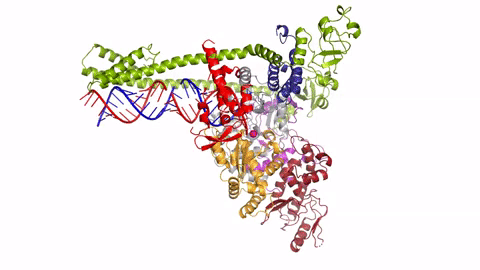The coronavirus has a particularly hefty genome for a virus in its class, consisting of around 30,000 building blocks. This should pose important challenges when it comes to copying its genetic material but we know from the contagious nature of the virus responsible for COVID-19 that this doesn’t seem to be an issue in particular.
Now, a team of researchers at the Max Planck Institute for Biophysical Chemistry in Göttingen, Germany, has found out how the virus manages to replicate its RNA once it infects cells and hijacks their biological machines for its own purposes.

Their work unraveled the 3-D structure of the virus’ polymerase — the enzyme responsible for copying the genetic material of a virus and a central component in the life cycles of viruses.
The polymerases are essential to the replication of viruses and are therefore an extremely favorable target for the development of antiviral therapy.
“In view of the current pandemic we wanted to help,” Patrick Cramer, Max Planck Director, said in a statement. “We have extensive experience in studying polymerases.”
“We were surprised to find that the structure of the coronavirus polymerase is special—it differs from other structures that we have been investigating so far,” explains Hauke Hillen.
This was extremely challenging work. Max Planck chemists carefully purified three proteins that, after some optimization, could reconstitute the polymerase in a test tube. The researchers then applied a special test that they developed in order to determine the activity of the coronavirus polymerase.
Finally, the scientists used an electron microscope to magnify the tiny sample more than 100,000-fold. After 10 days of taking pictures around the clock, the researchers had yet to capture a detailed picture of the enzyme that the coronavirus uses to replicate its genetic material.
But their efforts eventually paid off.
“One sample looked different, somehow strange. Our first thought was to discard it. Fortunately, we did not: This sample, overall, provided us with the high-quality data we needed,” said Dimitry Tegunov, who was in charge of processing the large volumes of image data in a short time.
According to the researchers, the coronavirus polymerase binds to RNA like any other known virus, with a notable difference. The polymerase has an additional element that it uses to bind to RNA until it has copied the genetic material, therefore overcoming the major challenge of copying a rather long genome.
Once they made their findings, the researchers immediately published them online on a preprint server given the urgency of the COVID-19 crisis.
“We wanted to immediately share our findings with the international scientific community to speed things up, now that we are in the middle of the pandemic,” said Lucas Farnung, co-author of the new study and soon-to-be professor at Harvard University.
The path to antiviral medicine against the coronavirus
In the past, viral polymerases have been targeted by antiviral therapy. Inhibiting the function of polymerase is how many very efficient drugs work, such as those against the hepatitis C virus (HCV), herpesviruses, HIV, hepatitis B virus (HBV) and influenza virus.
By having this essential information in hand at an atomic level, scientists can begin to understand how antiviral substances could block the spread of the coronavirus.
“Many hopes rest on remdesivir, which directly blocks the polymerase. With the structure at hand it might be possible to optimize existing substances such as remdesivir and to improve their effect. But we also want to search for new substances that are able to stop the virus polymerase,” Cramer says.






